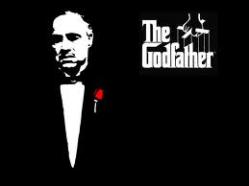
By Eric Walz
A handful of films have stood the test of time; among them is the 1972 blockbuster The Godfather. In the late 1960’s, Hollywood studio seemed to have lost its audience as it struggled to produce popular movies.
When the Godfather was released in 1972, it became the first of a new style of filmmaking. With directors and Hollywood studios no longer bound by the restrictive movie rating system, movies could contain graphic violence and language never before seen in the movie world.
Paramount was in severe financial trouble in the early 1970s and really needed a big hit. They specifically asked Francis Ford Coppola to make the film more explicitly violent. The Godfather can be considered the first Hollywood blockbuster, and soon other up-and-coming directors, such and Steven Spielberg and George Lucas, would follow with their own blockbuster films. The Godfather, at the time, set the benchmark for acting, directing, and screenwriting, and even movie’s soundtrack stood out with its memorable melody.
Director Francis Ford Coppola and Gordon Willis, the film’s cinematographer, employed unique filming techniques that can be identified throughout the film. They filmed many scenes using low-lighting techniques that are similar to “film noir.”
One example is the light filtered by window shutters seen behind Marlon Brando in the opening scene. The characters faces are dimly lit, and the backgrounds are often black. This adds a dramatic element to the overall movie. Many scenes are bathed in darkness. In many of the films close-up shots of Marlon Brando, his face was lit from above so his eyes are filled with shadow; this adds an almost sinister quality to the character.
Because The Godfather is a period movie set in the 1940’s and 50’s, cinematography played an important role to recreate this era. Costumes, set design, lighting, and makeup, all contributed in making the film look realistic.
In addition to light, the cinematography displayed in the film takes advantage of modern technology available while employing conventions of the time period for which it was set. Coppola used multiple bridging shots in the film. In several shots, he covers the passage of time with spinning newspapers headlines, which is a technique common in 1940’s movies.
Coppola also utilizes newer technologies when filming The Godfather. The opening scene uses a computer-controlled camera to zoom out on the face of character Bonasera while he was speaking to Marlon Brando.
The Godfather brought attention to the criminal underworld of the mafia. In the process, it reinforced stereotype about Italian Americans. The “mafia” has become the primary pop culture expression of the Italian-American identity. This is due largely to the enduring influence The Godfather. The subsequent mafia films borrowing from the original script of The Godfather further reinforced this.
Marlon Brando’s demeanor became a part of pop culture after the films release. Additionally, the script contained many popular quotes. The line spoken by actor, Al Pacino, who played the character Michael Corleone, “make him an offer he can’t refuse” has become one of the memorial movies lines ever. The Godfather created the “mafia style” crime movie genre that is still popular today.
The film industry was struggling to reinvent itself after the 1960’s, yet The Godfather was hugely profitable and became the highest grossing picture ever made at the time. It would retain this title until another blockbuster, Jaws, which was directed by up-and-comer Steven Spielberg was released in 1975. The Godfather, along with other 1970’s blockbusters, Close Encounters of the Third Kind (1976) and Star Wars (1977) revitalized the sagging film industry.
The sequels that followed were a first for the film industry, and Hollywood saw the opportunity to take a blockbuster film and keep the story going through sequels. Additionally, releasing sequels to blockbusters almost guaranteed huge profits for the movie studios.
Some people in Hollywood felt cultural tensions that developed in the 1960’s and the Vietnam War. The Italian-American Civil Rights League protested The Godfather for its negative depiction of Italians.
Marlon Brando famously shunned the Hollywood community by refusing to accept his best actor Oscar for his work in The Godfather. He stated it was Hollywood’s portrayal of Native Americans, and the government’s involvement the 1973 Wounded Knee Incident, as the reason.
The Godfather also helped to shape the Italian-American stereotype, much to the dismay of many Italian Americans at the time. The moral and social tension that these men were above the law and could create their own justice was displayed throughout the film.
Director Francis Ford Coppola was concerned about losing his job while making this film. No, he was not drunk on the set, he was under serious pressure from Paramount to make this film profitable. Coppola and Paramount Picture’s executives were unsure how audiences would accept this film.
Nonetheless, The Godfather was widely received and became a commercial success. It catapulted Coppola’s career as a director to new heights. All of the movie making elements came together flawlessly in The Godfather. The screenplay, actors’ performances, the compelling in-depth storytelling and character development, cinematography, and soundtrack all contributed to making the film a well-loved classic.
Few movies have garnered such praise as this movie has. All the great filmmaking elements have been meticulously put together to create an entertaining, captivating, and phenomenal film.

Reblogged this on The Godfather blog.